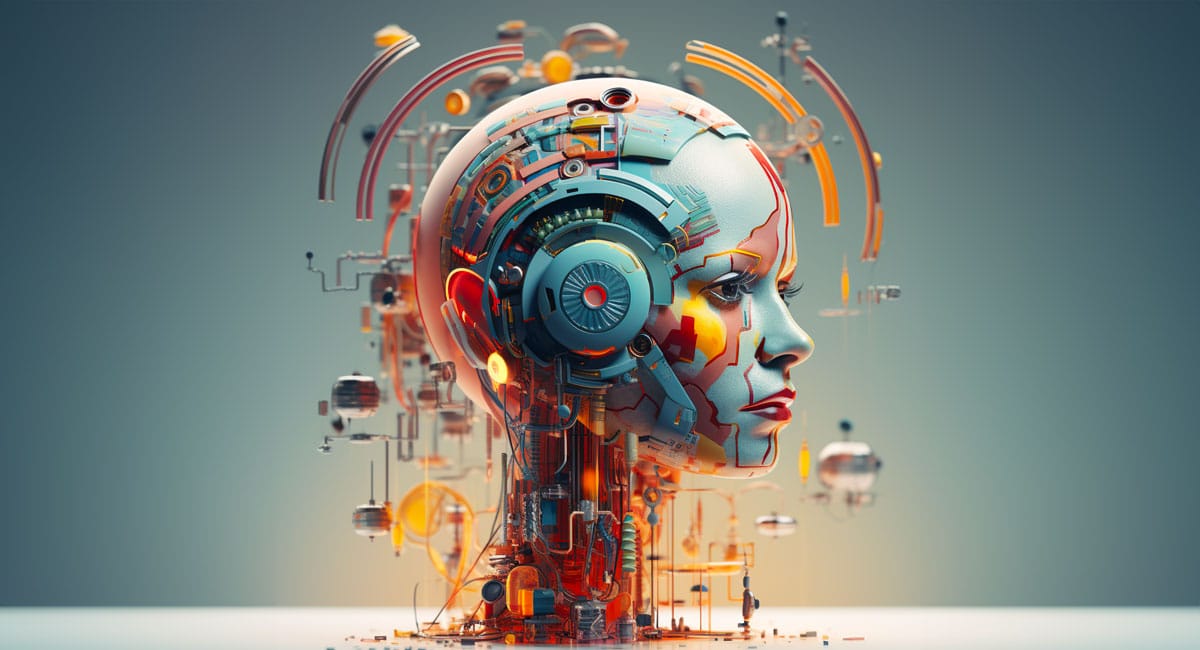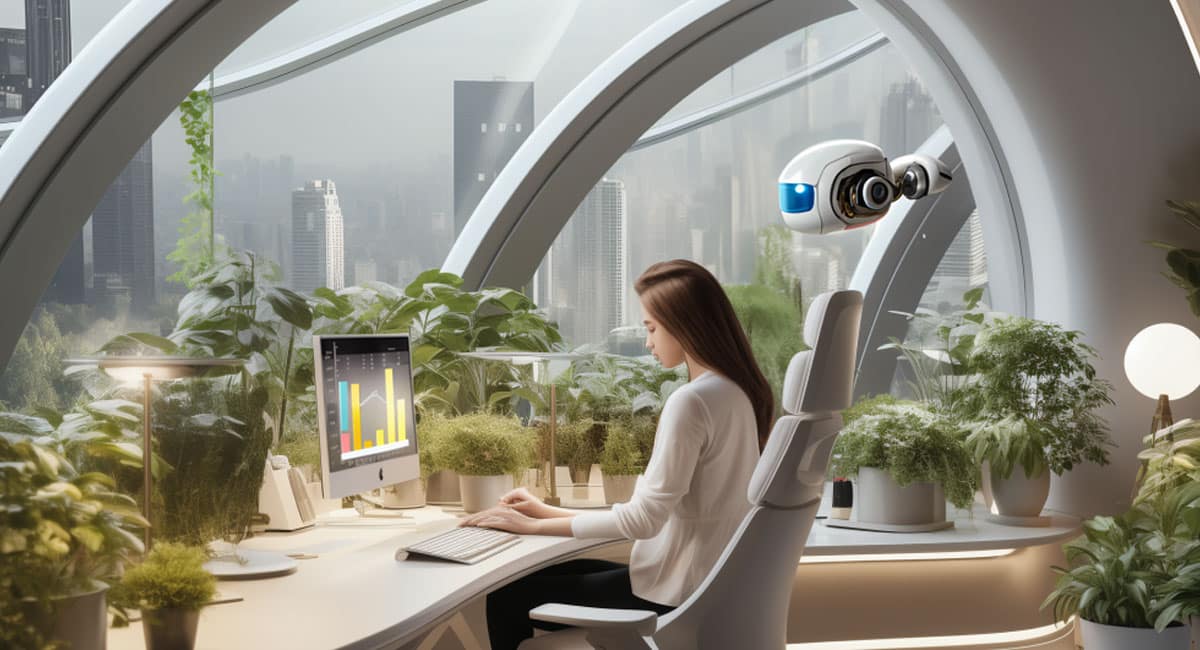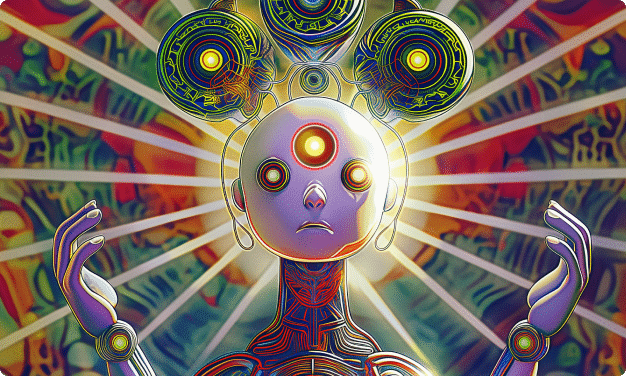ChatGPT and other generative artificial intelligence platforms are transforming how we access information, answer questions, and even create and interpret art. But those tools come with limitations when it comes to performing more complex tasks or chaining multiple steps together.
That’s where autonomous AI agents come into play. Autonomous agents take generative AI technology to a new level, linking thoughts together and conducting several tasks to achieve an overall goal or series of goals specified in a prompt.
Let’s dive deep into autonomous AI agents: what they are, how they’re used, what companies and industries can do to prepare for this evolving technology. We’ll also look at what the future holds for using AI to perform tasks that – until recently – required a human’s touch.
What are Autonomous Agents?
In the world of generative AI, autonomous agents are systems that harness the power of large language models (LLMs) to chain multiple thoughts together to arrive at a desired output or goal.
What sets autonomous AI agents apart from generative AI, is that they can perform several tasks in a row, using memory and tools, without direct human input needed.
Tools used by autonomous agents represent the information stores that get searched and used when a prompt is given. These can include the system’s LLM or external sources such as websites, databases, or other knowledge bases.
Memory refers to the learned experiences the autonomous agent has, through past prompts and outputs produced. These autonomous agents can retrieve this memory in order to develop more contextually relevant responses to perform the tasks at hand.
By combining these tools and memory, LLMs are transformed into systems or “agents” that can act autonomously to complete a set objective or goal.

Autonomous AI Agents vs. Foundation Models
Autonomous agents are designed to act independently, making decisions and taking actions based on their perception of the environment and goals. They can be reactive or adaptive, depending on the complexity of the agent.
In contrast, foundation models, like large language models, are pre-trained on vast datasets and provide general knowledge or capabilities that can be fine-tuned for specific tasks.
While autonomous agents are goal-driven and focused on performing actions, foundation models are used to generate, classify, or interpret data without direct interaction with their environment.
4 Types of Autonomous AI Agents
Autonomous AI agents function with varying levels of complexity, from basic reactive behavior to advanced self-awareness. Understanding these different types helps you recognize how AI can solve problems and make decisions on its own.
1. Reactive Machines
Reactive machines are the most basic type of AI agent. These agents respond to specific inputs with predefined actions but lack memory or the ability to learn from past experiences. They can only handle present tasks, but have no ability to form memories of previous tasks or use past data.
Example: Chess-playing programs that evaluate the current game state and make moves accordingly.
2. Limited Memory Agents
Limited memory agents can make decisions based on recent past information. They store short-term memories and use them to improve future decisions. These agents can use historical data to adjust decisions, but their memory is temporary and not continuously expanding.
Example: Self-driving cars that learn from previous trips to navigate more efficiently.
3. Theory of Mind Agents
Theory of mind agents are more advanced. They can understand emotions, intentions, and the mental states of other agents or humans, enabling better interactions. They simulate human-like interactions and are useful in areas requiring emotional intelligence.
Theory of mind agents are, in a sense, theory themselves. They are not fully realized yet but seen in some advanced robotics research.
4. Self-Aware Agents
Self-aware agents represent the most sophisticated AI type. These agents possess self-awareness, recognizing their own existence and status. They understand their role in a system, can make decisions while accounting for their own goals and objectives,and are capable of autonomous decision-making with greater context.
At this time, self-aware agents are still hypothetical, but a goal for future AI development.
8 Key Features of Autonomous AI Agents
AI agents come in many forms, ranging from simple to highly advanced, and their focus can be either specialized or broad. When choosing the right AI agent for your business, it’s important to understand key features that will influence how well the agent fits your needs.
Autonomy: This refers to the agent’s ability to perform tasks independently, with minimal human guidance. The more advanced the agent, the greater its ability to operate autonomously, completing tasks and improving its performance over time without direct supervision.
Adaptability: This is crucial for agents to respond to changing environments, similar to how self-driving cars adjust to road conditions. An adaptive agent can navigate obstacles, interpret data, and seize opportunities, adjusting its behavior based on the situation at hand.
Tool Use: This enables AI agents to interact with and utilize tools within your technology stack to accomplish their goals. For instance, an agent tasked with running a marketing campaign might automatically set up and manage email automations using your existing software.
Multimodal Perception: This allows agents to process and interpret various types of data, such as images, text, video, and audio, to make more informed decisions and better execute tasks. This broad sensory input enhances the agent’s capabilities.
Memory Storage: This plays a vital role in how an AI agent can use past experiences to perform current tasks. Agents with built-in memory or access to third-party databases can recall previous actions, improving their efficiency and decision-making over time.
Action Plans: These guide the agent in performing tasks and provide a roadmap of resources, constraints, and potential challenges. These plans help the agent stay on track and work within the limits of the task requirements.
Learning Methodologies: These give agents the ability to learn and improve through techniques like unsupervised and reinforcement learning. Reinforcement learning, in particular, is key to helping agents refine their actions by receiving feedback and adjusting accordingly.
External Browsing: This allows AI agents to tap into external resources, such as web content, APIs, and other databases, to gather information. This helps the agent expand its knowledge and adapt to new or changing contexts.
How Do Autonomous Agents Work?
Autonomous agents can vary in complexity, ranging from simple systems that perform a predefined sequence of actions in a structured environment, to sophisticated AIs that learn and adapt in complex, dynamic situations. Here’s a basic summary of how autonomous AI agents work:
Sensing the Environment
Autonomous agents interact with their environment through sensors or direct human prompts. Sensors can include cameras, microphones, touch sensors, or other specialized equipment depending on the agent’s purpose. Inputs can be direct from a human, such as goals and objectives of a particular task. The system uses this information to make decisions.
Processing Information
The information gathered from the environment and/or inputs is processed by the agent’s internal systems. This involves analyzing data, recognizing patterns, and making sense of the information using algorithms and computational methods.
Decision Making Process
Based on the processed information, the agent “thinks” and makes decisions or selects actions to achieve the stated objectives. This entire process often involves algorithms like machine learning, rule-based systems, or other decision-making models.
Acting on the Environment
Once a decision is made, the autonomous agent executes a sequence of actions in the environment. This could involve physical movements (for robots), performing specific research or tasks, generating responses, or interacting with other agents or systems.
Learning and Adaptation
Autonomous agents often have the ability to learn from their experiences. This learning can involve reinforcement learning, where they adjust their behavior based on feedback received from the environment, or through supervised or unsupervised learning methods.
Goal-Oriented Behavior
Autonomous agents typically operate with specific goals or objectives in mind. These goals might be predefined by their programming or learned over time based on the agent’s memory of experiences and interactions.
Practical Applications: What Can Autonomous Agents Do?
Because they can operate independently to perform a wide range of tasks without direct human supervision, autonomous AI agents are applicable in numerous fields. Here are some key use cases in different industries:
Robotics
In manufacturing and warehousing, autonomous robots handle tasks like moving items, packaging goods, and performing repetitive tasks on assembly lines.
In healthcare, robots assist surgeons during operations, deliver medications within hospital environments, and support patient care by lifting and transferring individuals.
In exploration, drones and rovers are deployed to explore hazardous or remote areas such as space and deep-sea environments.
Transportation
Autonomous vehicles, including cars, trucks, and drones, are capable of navigating roads and environments without human intervention, allowing them to deliver goods, transport passengers, and conduct inspections independently.
In public transit, autonomous buses and trains optimize routes, improve scheduling, and increase safety.
Customer Service and Support
Autonomous agents like chatbots and virtual assistants play an essential role in customer service, where they handle inquiries, provide support, and perform specific tasks using natural language processing (NLP). These systems also drive personalized recommendations, using AI to analyze user behavior and offer tailored suggestions.
Additionally, AI agents categorize, tag, and organize content within knowledge bases so information remains structured and easily accessible for users.
Finance and Business
In finance, autonomous agents execute algorithmic trading by analyzing market trends and data, making faster and more precise decisions than humans can. AI-driven systems also monitor financial transactions to detect and prevent fraudulent activities.
Furthermore, adaptive knowledge bases use machine learning to learn from user interactions, dynamically updating content and structure to better serve users within organizations.
Agriculture and Environment
Autonomous agents are pivotal in precision farming, where they monitor crop conditions, apply fertilizers, and manage irrigation based on environmental data to maximize agricultural yields.
In environmental monitoring, drones and sensors autonomously track pollution levels, observe wildlife movements, and monitor natural disasters.
Security and Defense
Autonomous systems play a vital role in security, with drones and surveillance robots autonomously patrolling areas, monitoring activities, and enhancing overall safety.
In military applications, autonomous agents support reconnaissance missions, streamline logistics, and assist with decision-making processes in complex operational environments.
Autonomous AI Agent Tools
Let’s look at some of the best tools that will help you build your own autonomous artificial intelligence agents. They offer various levels of autonomy, customization, and integration. Some of these are still new, so you may need to work with them a bit to create an agent that meets your needs.
1. AgentGPT
AgentGPT is a platform that allows you to create, configure, and deploy autonomous AI agents for various tasks. It provides a user-friendly interface to build agents that can make decisions, perform tasks, and adapt to new situations with minimal coding.
- Easy-to-use web interface.
- Supports autonomous decision-making and task automation.
- Ideal for both non-technical and technical users.
2. SuperAGI
SuperAGI is a framework for creating more sophisticated autonomous agents that are scalable and modular. It allows for more extensive control and integration with external systems, enabling agents to perform a wider range of actions and tasks.
- Focused on scalability and customization.
- Allows integration with external APIs and external tools.
- Suitable for complex, enterprise-level use cases.
3. Microsoft JARVIS
Microsoft JARVIS (formerly known as Project JARVIS) is a conversational AI assistant tool designed to understand natural language and interact with users in various contexts. It integrates seamlessly with Microsoft services to automate workflows and assist with decision-making tasks.
- Integrated with Microsoft ecosystem (Office, Azure).
- Specializes in conversational AI and task automation.
- Useful for businesses that need productivity automation.
4. Auto-GPT
Auto-GPT is an experimental open-source application that uses GPT models to create autonomous agents capable of running multiple tasks without human input. It combines large language models with decision-making capabilities, enabling agents to handle complex, multi-step operations.
- Uses GPT models for task automation and decision-making.
- Fully autonomous once given a goal.
- Open-source and customizable for various tasks.
5. BabyAGI
BabyAGI is a simplified version of AGI (Artificial General Intelligence) agents designed to autonomously handle small, iterative tasks. It helps in task management, breaking down larger goals into smaller actions, and learning from the results to improve future decisions.
- Focuses on task planning and execution.
- Learns from outcomes to optimize future tasks.
- Best for handling smaller, repeated tasks.
6. Godmode
Godmode is an AI-powered task management and automation tool that provides a command-driven interface to control autonomous agents. It gives you the ability to oversee and fine-tune the behavior of agents while they perform various tasks, offering a balance between autonomy and human oversight.
- Combines autonomy with manual control.
- Allows for customization and monitoring of agent behavior.
- Suitable for users who want some oversight over automated tasks.
What is the Potential of Autonomous Agents?
Autonomous agents represent a huge opportunity to contribute significant impacts to productivity, scalability, and performance improvements.
Efficiency and Productivity
By automating tasks, businesses can reduce labor costs significantly, particularly for repetitive or mundane activities. Agents can operate round the clock without fatigue, enhancing productivity and allowing continuous operations.
Safety and Risk Mitigation
In sectors like transportation or manufacturing, autonomous agents can minimize human errors, reducing accidents and improving overall safety. In hazardous environments (e.g., deep-sea exploration, disaster zones), autonomous agents can operate without endangering human lives.
Scalability and Adaptability
Autonomous agents can be scaled easily across various applications without proportional increases in resources. These agents can adapt to changing conditions, learn from experiences, and improve performance over time, making them versatile for evolving needs.
Swarm Intelligence
Similar to container technology in software development, a multi-agent framework involves coordinating multiple autonomous agents to work collaboratively, mimicking natural behavior that optimizes solving problems (like when insects or animals work together). A swarm of agents can collectively perform tasks even if individual agents fail and can adapt to dynamic environments and distribute tasks efficiently among multiple agents.

Limitations of Autonomous AI Agents
While autonomous AI agents offer many competitive advantages, they are not without their limitations. Understanding these drawbacks of these intelligent systems is important to ensure that you can effectively manage expectations and mitigate potential risks when integrating AI agents into your operations.
- Limited Understanding: AI agents may struggle with tasks that require deep comprehension, nuance, or context that goes beyond their programming.
- Dependency on Data: Agents rely on quality data to function well; poor or biased data can lead to incorrect outcomes.
- Narrow Task Focus: Many agents are specialized for specific tasks and cannot easily adapt to broader or unrelated tasks.
- Lack of Creativity: AI agents follow predefined algorithms, limiting their ability to innovate or create new solutions outside of programmed capabilities.
- Ethical and Security Risks: Autonomous agents may unintentionally violate ethical guidelines or cause security issues, especially if not closely monitored.
- Resource Intensive: Running advanced AI agents can require significant computational resources and energy, making them costly to implement.
- No Emotional Intelligence: Agents cannot fully understand or respond to human emotions, which limits their ability to handle complex interpersonal interactions.
- Maintenance and Updates: Autonomous agents need continuous updates, monitoring, and maintenance to ensure they stay effective and aligned with evolving goals.
How Companies Can Prepare to Integrate Autonomous Agents
There are several things companies can do to prepare for the integration of autonomous agents.
To start, establish a clear understanding of what your company plans to achieve with an intelligent system. Conduct comprehensive assessments of your entire processes and then identify areas where autonomous agents could streamline operations, enhance efficiency, or improve customer experiences.
Additionally, companies should invest in the right technology infrastructure that is robust enough to handle the data influx and deployment of autonomous agents. This includes ensuring compatibility with AI and machine learning frameworks, setting up scalable databases, and establishing secure channels for information exchange.
Aside from the technical aspects, companies must also cultivate a culture that embraces and adapts to autonomous agents. To foster a more receptive environment for autonomous agents, encourage your team to think collaboratively with these agents rather than seeing them as replacements.
Educate employees about the role and capabilities of these agents, address concerns about job displacement by highlighting the augmentation aspect of these technologies, and provide training programs to upskill the workforce in areas that complement the use of autonomous agents.
Moreover, companies should establish clear guidelines and governance frameworks for the ethical and responsible use of autonomous agents. This effort will ensure transparency, accountability, and compliance with regulatory standards. Then, regularly evaluate and adapt your autonomous AI agents based on feedback.
The Future of Autonomous Agents
Autonomous AI agents promise to transform countless industries. These intelligent systems will evolve to possess heightened contextual awareness, leveraging advanced NLP, computer vision, and deep learning capabilities to interact with users in more nuanced and human-like ways.
Multi-agent systems will amplify their collective potential, enabling collaborative problem-solving and distributed task execution across networks of agents. Ethical considerations and responsible AI governance will become pivotal, shaping the development and deployment of these agents to ensure transparency, fairness, and accountability.
As AI technologies advance, autonomous agents will continue to evolve into integral entities, seamlessly integrating into daily life, revolutionizing workflows, and augmenting human capabilities rather than replacing them.




